Are we looking at AI-driven layoffs? inside Amazon, Shopify and Klarna's staffing updates
Tech leaders say they’re going “AI-first”—but that may mean fewer humans in the loop
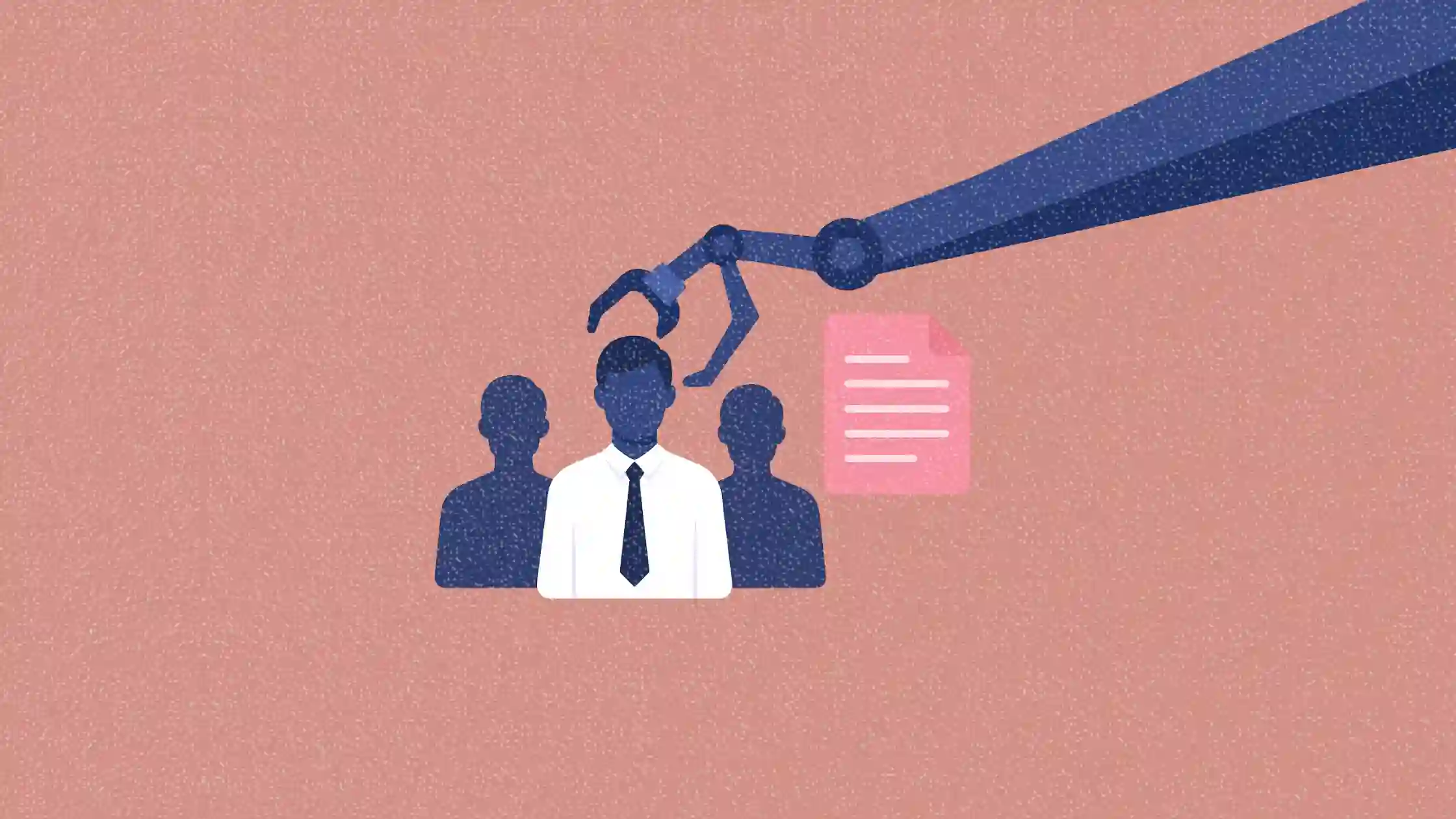
AI is triggering mass layoffs—but what does it mean for marketers?
The next wave of tech layoffs isn’t being blamed on economic headwinds or pandemic overreach. It’s being driven by artificial intelligence. From Amazon and Shopify to Duolingo and Klarna, top tech companies are cutting jobs—or freezing new ones—as they double down on AI-powered operations.
This article explores how executives are publicly justifying these moves, what it signals about the evolving role of AI in business, and what marketers should prepare for as companies scale back human labor in favor of automation.
Short on time?
Here’s a table of contents for quick access:
- Amazon: fewer people, more agents
- BT: AI cuts 10,000 roles
- Duolingo: “AI-first” means automating humans
- Klarna: 40% smaller team, AI-led marketing
- Shopify: hire only when AI can’t help
- What marketers should know
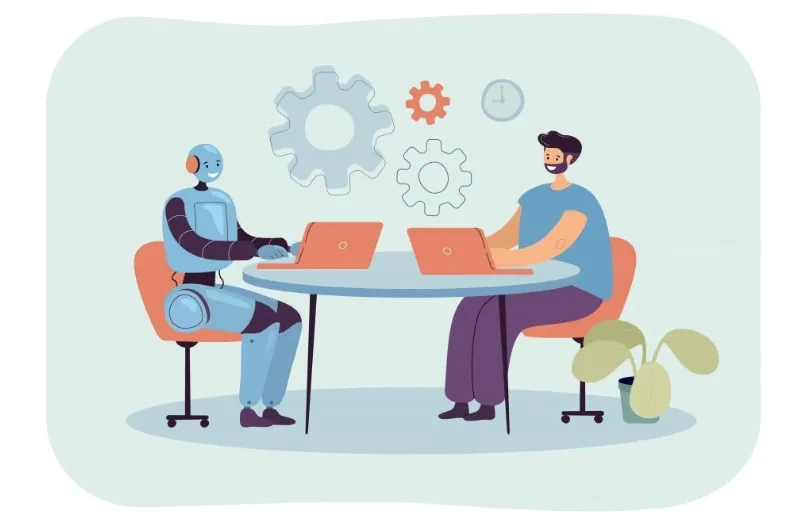
Amazon: fewer people, more agents
Amazon has laid off over 27,000 people since 2022, citing the usual culprits—macroeconomic shifts and operational streamlining. But in a recent blog post, CEO Andy Jassy made it clear that AI is now a strategic driver. The company is developing more than 1,000 generative AI projects, and Jassy confirmed that “fewer people” will be needed as these tools go live.
He highlighted advertising as one area where AI is already in play, noting that over 50,000 advertisers used Amazon's AI-powered planning and optimization tools in Q1 2024.
Marketer takeaway: Expect more AI-managed ad ops—and fewer human strategists in the room.
BT: AI cuts 10,000 roles
British Telecom plans to slash 55,000 jobs by 2030—roughly 40% of its workforce—with at least 10,000 of those jobs replaced directly by AI. CEO Allison Kirkby told FT the company is exploring how far automation can go, hinting at even deeper cuts.
AI is already being tested in sales and support roles, indicating that human-facing interactions may no longer be the protected zone they once were.
Marketer takeaway: AI isn’t just replacing backend ops—it’s coming for customer-facing teams too.
Duolingo: “AI-first” means automating humans
Duolingo has been an early adopter of generative AI for content translation and lesson building, leading to a 10% reduction in its contractor workforce. CEO Luis von Ahn says being “AI-first” means more than just adoption—it requires reshaping company systems entirely.
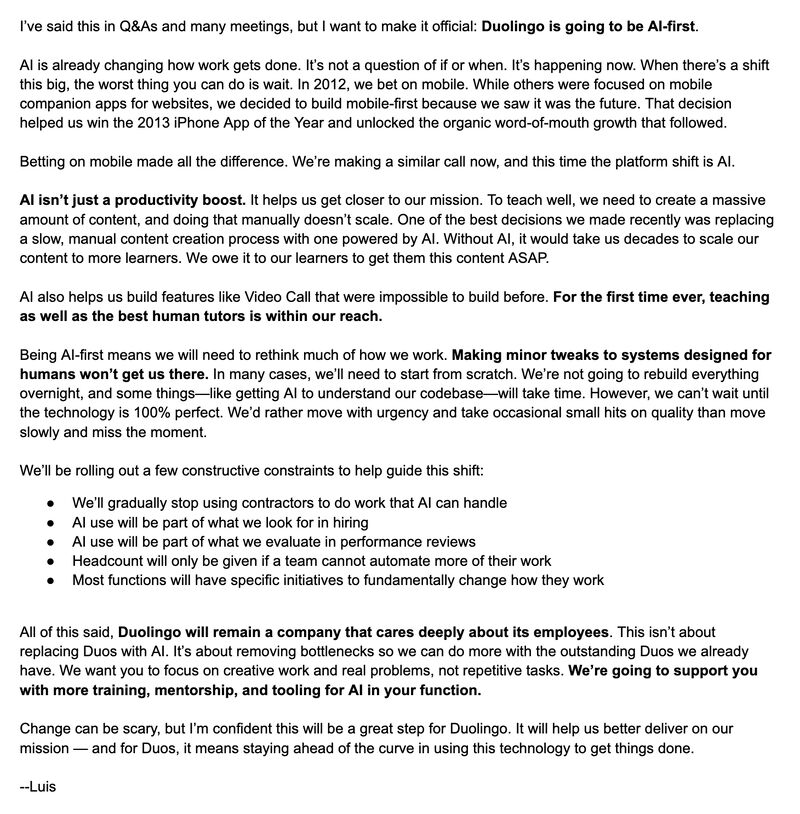
Hiring now requires proof that work can’t be further automated. Even performance reviews are being filtered through an AI lens.
Marketer takeaway: AI-driven orgs may prioritize lean, technical teams over traditional marketing or creative hires.
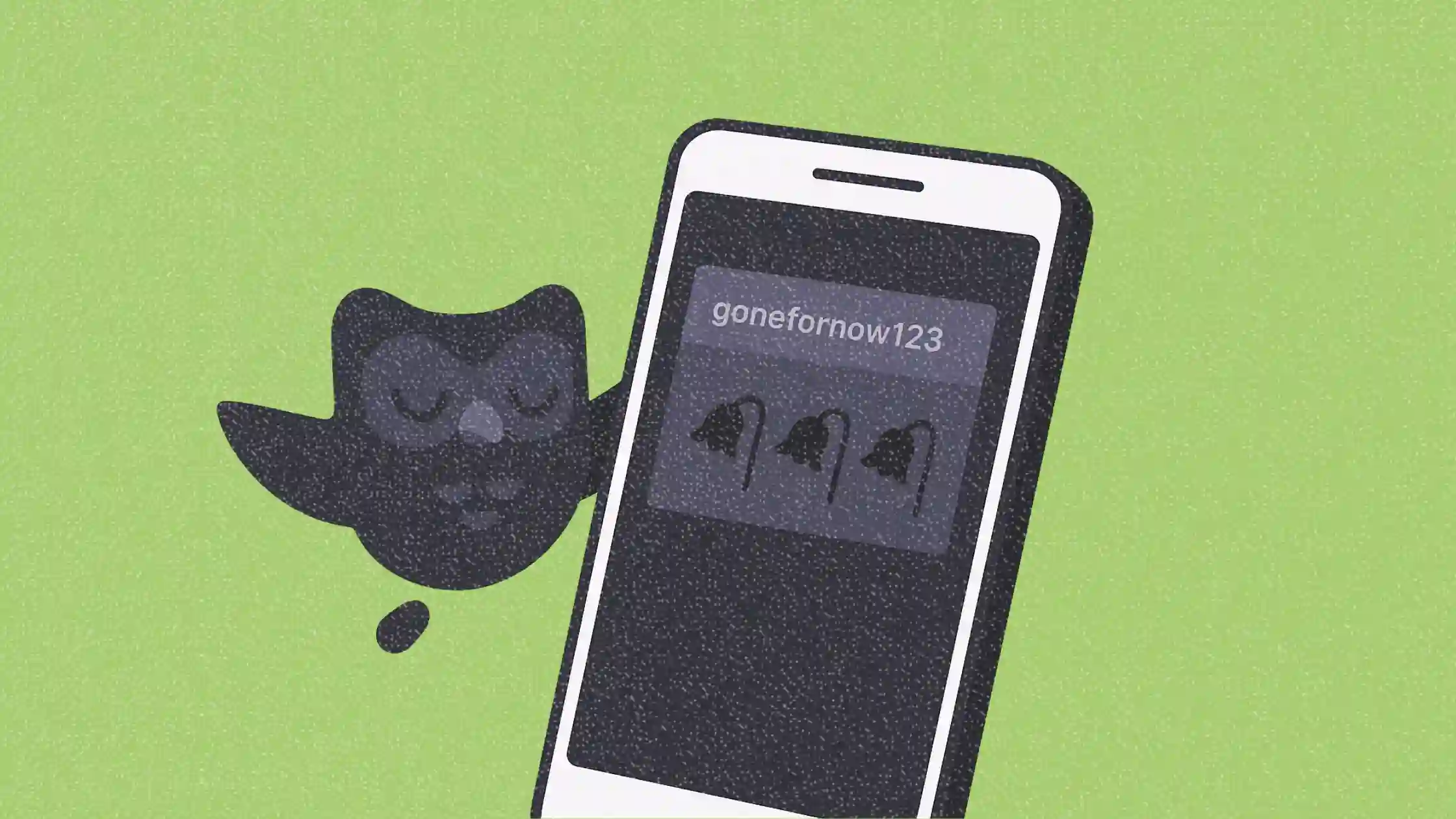
Klarna: 40% smaller team, AI-led marketing
Swedish fintech Klarna has cut its workforce nearly in half, shrinking from 5,000 to 3,800 employees, and plans to reduce it further to 2,000. CEO Sebastian Siemiatkowski pointed directly to AI as the reason.
Klarna’s CMO David Sandström also acknowledged that AI is actively replacing marketing headcount—and suggested more cuts may follow.
Marketer takeaway: Expect smaller marketing teams, with AI picking up creative and analytical tasks across the board.
Shopify: hire only when AI can't help
Shopify has reduced headcount two years in a row and now expects every employee to use AI “reflexively.” CEO Tobi Lütke said that no team will get new hires unless they can prove the job can’t be done by AI agents.
The company is even tying performance reviews to AI fluency, embedding it into daily workflows.
Marketer takeaway: Marketing teams that can’t work with AI—or prove their human value—might not survive the next planning cycle.
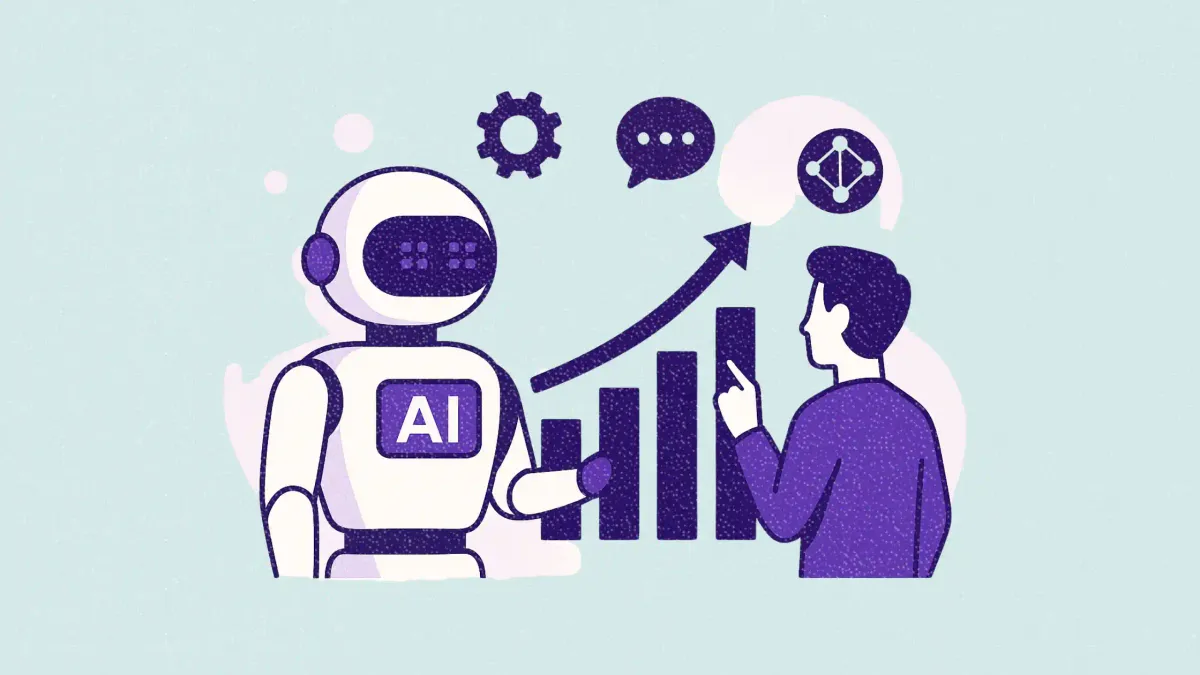
What marketers should know
Tech’s AI transformation isn’t just about operational scale—it’s a cultural and strategic reset. Here's how marketers can stay relevant:
1. Master AI tools or risk redundancy
From campaign optimization to customer support chatbots, AI is now table stakes. If you’re not fluent, you're falling behind.
2. Proactively redefine your role
Ask: what can AI not do—yet? Lean into creative, strategic, and brand-building tasks that still require human nuance.
3. Prepare for leaner teams
Whether you’re in-house or agency-side, expect smaller teams. Prioritize outputs, not headcount.
4. Rethink performance metrics
If your org starts using AI in peer reviews or hiring processes (as Duolingo and Shopify now do), make sure you’re benchmarking the right skills—namely AI literacy and strategic thinking.
The AI-first narrative is more than a trend—it’s becoming the rationale for shrinking teams and restructuring org charts.
While that may mean more efficient ops, it also creates new pressure for marketers to prove their value in ways machines can’t replicate.
For marketing leaders, this is the moment to pivot—not panic. Know your tools, reframe your impact, and stay sharp as the rules of hiring and performance continue to shift.







